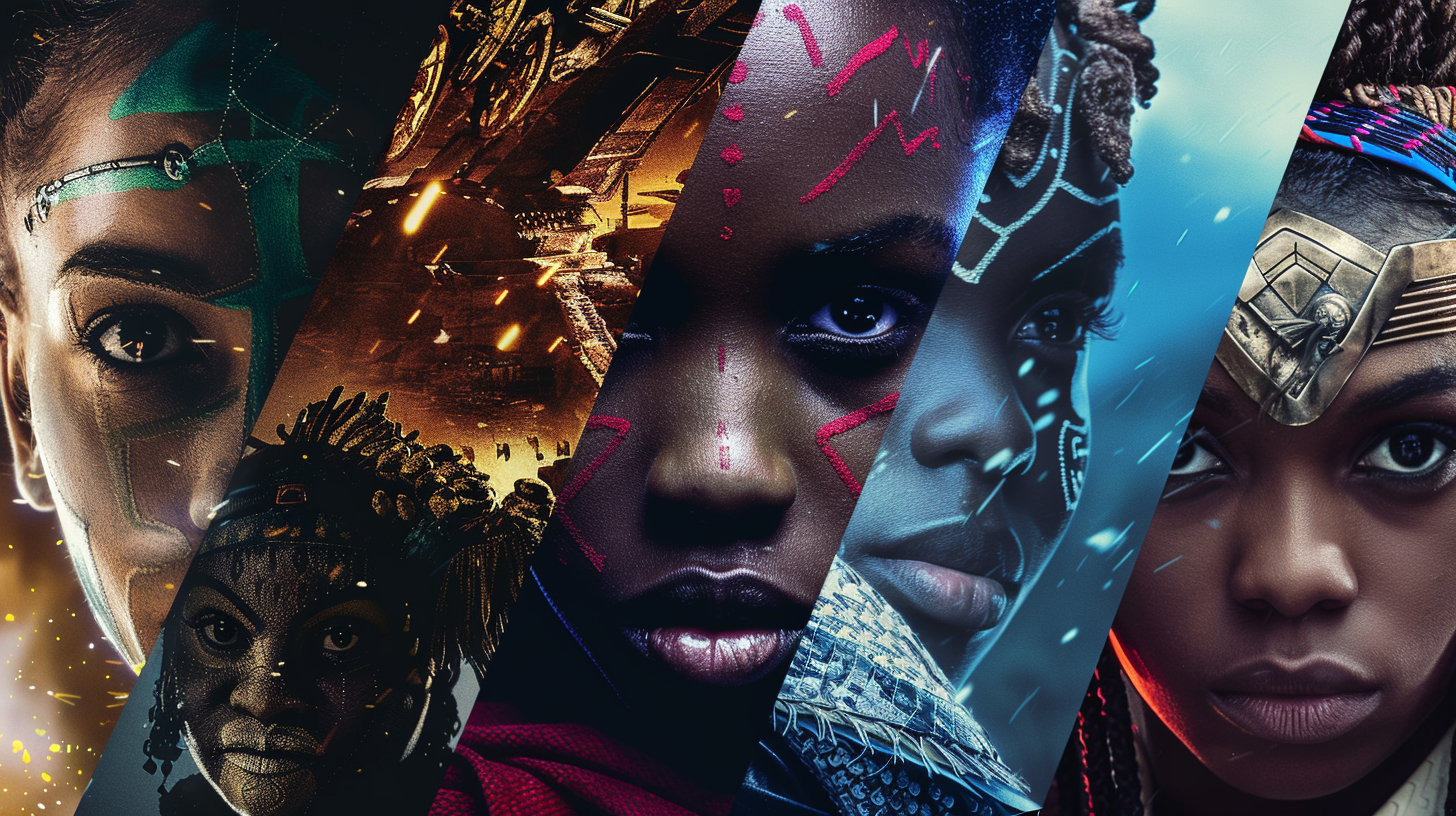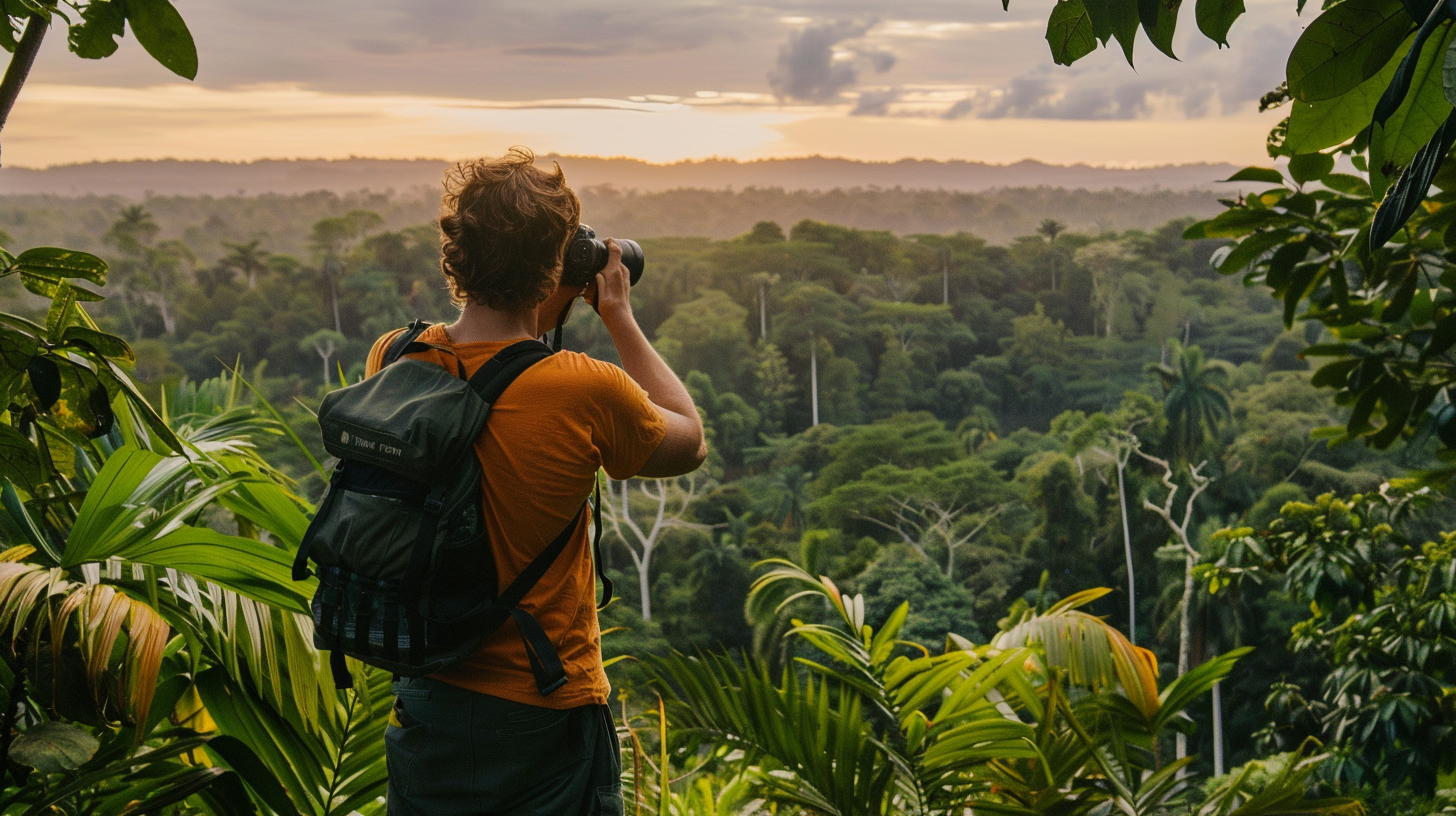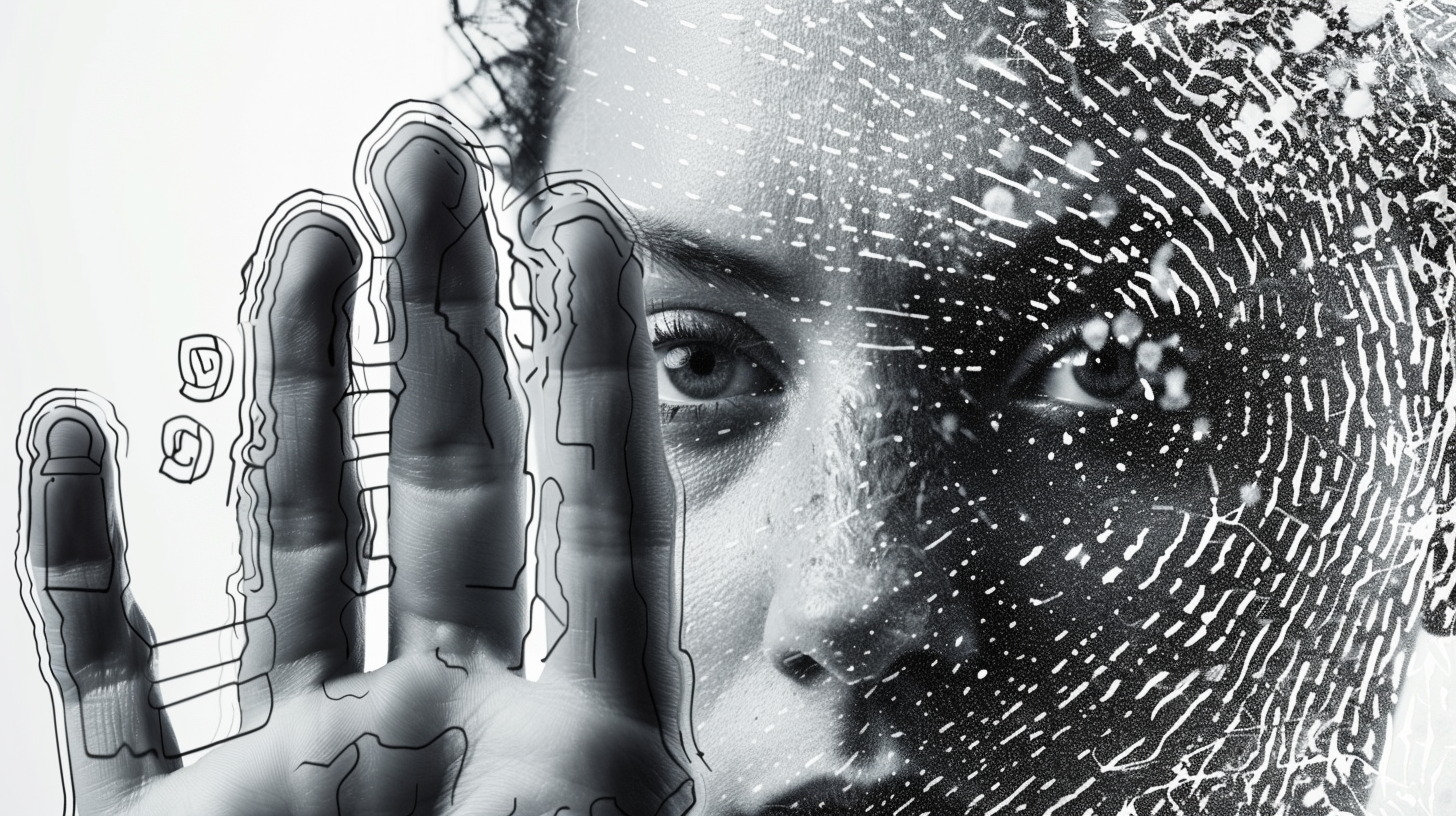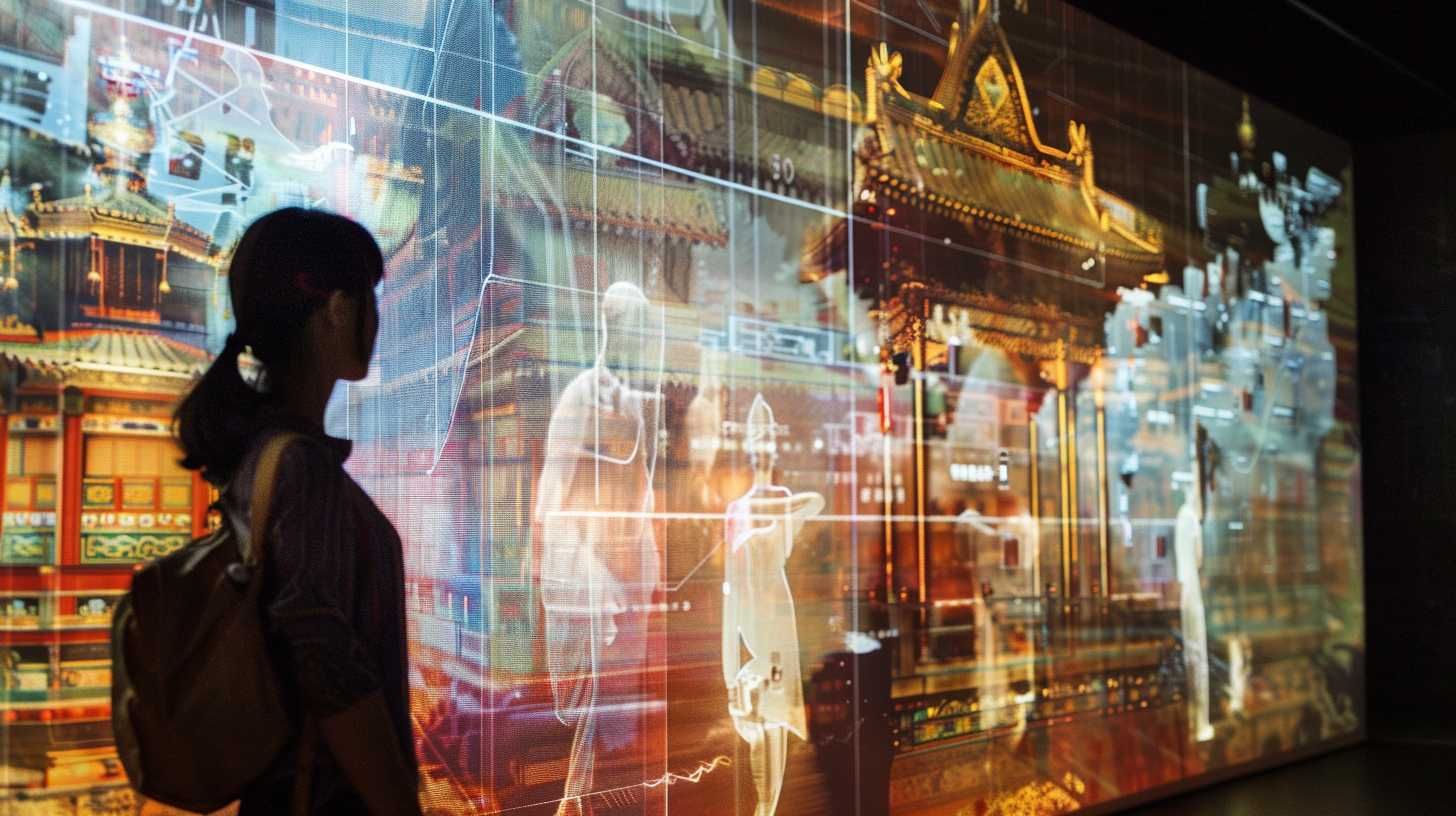Table of Contents Show
We’ve witnessed films evolve, listened to diverse stories unfold in music, and seen television shows break barriers; yet, we’re still negotiating the complex terrain of cultural representation. As we celebrate the strides made toward inclusivity, we can’t ignore the pitfalls of tokenism and stereotypes that often mar progress. The rise of social media has amplified voices calling for change, highlighting the global demand for more authentic and respectful representation. But what does the future hold for cultural diversity in entertainment? Let’s explore this together, considering how far we’ve come and the challenges that still lie ahead.
Key Takeaways
- Entertainment has evolved from reinforcing stereotypes to embracing authentic cultural portrayals.
- Diversity in narratives enriches the cultural tapestry and promotes inclusivity.
- Challenges like tokenism and balancing stereotypes remain in achieving genuine representation.
- Social media amplifies underrepresented voices, offering immediate feedback and accountability in cultural representation.
Historical Overview
Throughout history, we’ve seen a profound evolution in cultural representation within the entertainment industry, moving from stereotypes to more nuanced and authentic portrayals. Initially, we were often presented with one-dimensional characters that hardly reflected the rich tapestry of human experiences. These early representations were not just inaccurate; they actively reinforced harmful stereotypes, limiting our understanding and appreciation of different cultures.
As audiences, we’ve always craved stories that resonate with us, stories that reflect the diversity and complexity of the world we live in. We’ve pushed for change, advocating for a more inclusive approach to storytelling. Our voices have been pivotal in shifting the narrative, urging creators to move beyond simplistic caricatures and explore characters and stories with depth and authenticity.
This push for diversity isn’t just about seeing ourselves on the screen or in the pages of a book. It’s about freedom—the freedom to be represented, the freedom to see the world through multiple lenses, and the freedom to understand and appreciate the richness of diverse cultures. It’s about breaking down barriers and building bridges through the power of storytelling.
We’ve come a long way, but the journey isn’t over. Each step forward in cultural representation within the entertainment industry marks progress in our collective quest for freedom and understanding. By continuing to demand and support more authentic portrayals, we’re not just enriching our entertainment landscape; we’re fostering a more inclusive, understanding, and free world.
Celebrating Diversity Wins
In recent years, we’ve witnessed significant strides in celebrating diversity within the entertainment industry, marking a pivotal shift towards more inclusive and authentic representation. We’re not just talking about ticking boxes; we’re seeing a genuine embrace of stories and characters from a myriad of backgrounds. This movement has not only opened doors for underrepresented voices but has also enriched our cultural tapestry, offering audiences a broader, more vibrant spectrum of narratives.
To better illustrate this progress, let’s examine some standout examples:
| Year | Achievement | Impact |
|---|---|---|
| 2018 | "Black Panther" | Pioneered Afrofuturism in mainstream cinema |
| 2019 | "Parasite" | First non-English film to win Best Picture at the Oscars |
| 2020 | "Schitt’s Creek" | Celebrated for its positive LGBTQ+ representation |
| 2021 | "Raya and the Last Dragon" | Showcased Southeast Asian cultures |
| 2022 | "Everything Everywhere All at Once" | Highlighted Asian-American experiences |
These milestones reflect a growing commitment to celebrating diversity, moving beyond mere representation to authentically portray the richness of human experience. It’s about freedom—the freedom to see ourselves in the stories told, the freedom to dream in colors as diverse as our realities, and the freedom to break free from the monochromatic narratives of the past.
We’re on a journey towards a more inclusive entertainment landscape, and while there’s still a long way to go, the wins we’re celebrating today pave the way for a future where everyone has the freedom to be seen, heard, and valued. We’re not just watching change; we’re part of it.
The Tokenism Trap
While we celebrate the milestones in diversity, it’s also important to recognize the pitfalls of tokenism that can undermine genuine representation. Tokenism, the practice of making only a perfunctory or symbolic effort to be inclusive, often results in shallow character development and undermines the richness of cultural narratives. We’re keen on steering clear of this trap, advocating for an industry that mirrors the true diversity of our world.
Tokenism doesn’t just halt progress; it actively sets us back. When creators include diverse characters merely to tick a box, they’re not providing the meaningful representation we’re fighting for. It’s a disservice to both the characters and the audiences who see themselves in them. Here’s why we must avoid tokenism at all costs:
- It reinforces stereotypes: By not fully developing diverse characters, tokenism often resorts to clichés, further entrenching stereotypes.
- It limits opportunities: Tokenism satisfies the bare minimum, closing doors on further exploration of diverse narratives and characters.
- It undermines authenticity: Audiences crave genuine stories, and token characters cannot fulfill this desire, leading to a disconnect.
- It stifles voices: Tokenism silences the very voices it pretends to amplify, ignoring the multitude of stories they have to tell.
We’re advocating for a shift towards more meaningful, authentic representation. This isn’t just about avoiding the tokenism trap; it’s about embracing the freedom to tell a myriad of stories that reflect the real world. Let’s champion for narratives where every character has depth and purpose, moving beyond tokenism to a future where diversity is genuinely celebrated.
Cultural Accuracy Vs. Stereotypes
Exploring the fine line between cultural accuracy and stereotypes requires a careful, informed approach to storytelling. We’re maneuvering through a landscape where every detail in representation matters, endeavoring to reflect cultures with respect and authenticity. It’s a balancing act, ensuring that characters and stories resonate with truth rather than falling into the trap of clichés.
We’ve seen how stereotypes can oversimplify and harm, while cultural accuracy opens doors to understanding and connection. Yet, achieving this accuracy isn’t just about avoiding stereotypes; it’s about embracing the multitude of experiences within any given culture. It’s a journey towards narratives that honor the complexity of human experiences across diverse backgrounds.
To illustrate, let’s compare these concepts in a table:
| Cultural Accuracy | Stereotypes |
|---|---|
| Draws on genuine cultural experiences and insights. | Relies on oversimplified, often incorrect, assumptions. |
| Encourages deep research and consultation with people from the culture. | Can be created without input from the culture it portrays. |
| Promotes understanding and empathy. | Fuels misconceptions and division. |
| Reflects the diversity within cultures. | Tends to homogenize and flatten cultural nuances. |
As storytellers and audiences, we crave freedom – the freedom to see our realities mirrored in entertainment and the freedom to learn about others’ lives without the distortion of stereotypes. Striving for cultural accuracy is not just an artistic choice; it’s a commitment to respect and human dignity. It’s our path towards a more inclusive, understanding world.
The Impact of Social Media
Social media often amplifies both the challenges and opportunities in achieving cultural representation in entertainment. It’s a double-edged sword, where voices from diverse backgrounds can finally be heard, yet it also opens the door for relentless scrutiny and backlash. We’ve seen it become a powerful platform for advocacy, pushing for more inclusive representation in movies, TV shows, and other forms of media. It’s where hashtags turn into movements, and movements can lead to real change.
However, managing social media’s impact isn’t straightforward. Here’s how it plays out:
-
Visibility for Underrepresented Voices: Social media gives a megaphone to those who’ve historically been sidelined. It’s heartening to see stories and perspectives that mainstream media often overlooks gaining traction and recognition.
-
Instant Feedback Loop: Creators and producers can no longer hide in ivory towers. They get immediate reactions to their work, for better or worse. This immediacy can foster a more dynamic engagement with audiences but can also be a minefield.
-
Accountability and Backlash: With visibility comes vulnerability. Missteps are called out, sometimes leading to meaningful dialogue and change. Other times, it can devolve into cancel culture, stifling creative risks.
-
Global Reach and Echo Chambers: While social media connects us across continents, it can also reinforce silos. We’re exposed to more cultures, yet algorithms can trap us in echo chambers, limiting the diversity of content we encounter.
Striving this landscape requires a delicate balance. We’re all learning and adapting, aiming for a world where everyone’s story can be told and heard with the respect and dignity it deserves.
Representation Behind the Scenes
As we navigate the complex role of social media in amplifying diverse voices, it’s equally important to focus on who’s telling these stories behind the scenes. The truth is, the path to genuine representation isn’t just about who we see on screen but also about who’s making the decisions, writing the scripts, and shaping the narratives. We’re pushing for a shift where more diverse voices are not just heard but are also integral in the storytelling process.
We’ve seen progress, with more creators of color, women, and members of the LGBTQ+ community taking their rightful places as directors, producers, and writers. However, we’re still far from where we need to be. It’s critical that the entertainment industry reflects the world’s diversity not only in front of the camera but behind it as well. This safeguards that stories are told with authenticity and depth, resonating with a broader audience and empowering those who’ve been historically marginalized.
We’re advocating for systemic changes—more mentorship programs, equitable hiring practices, and transparent pathways for underrepresented groups to rise in the ranks. It’s not just about creating opportunities; it’s about dismantling the barriers that have kept these voices silent for too long.
Let’s not forget, the fight for freedom includes the freedom to tell our own stories, on our terms. As we champion diversity on screen, let’s commit to the same behind the scenes. It’s only through this holistic approach that we can truly celebrate and understand the full spectrum of human experience.
Global Perspectives on Representation
As we turn our attention to global perspectives on representation, it’s essential we examine how diverse casting decisions and authentic storytelling efforts shape our understanding of cultures worldwide. By embracing a wide range of voices and stories, we’re not just broadening our horizons but also challenging stereotypes and misconceptions. Let’s explore how these practices impact viewers and creators alike, fostering a more inclusive and understanding global community.
Diverse Casting Decisions
We’re exploring how diverse casting decisions are reshaping global perspectives on cultural representation in the entertainment industry. It’s more than just filling quotas; it’s about bringing a wealth of experiences and viewpoints to the screen. This shift is pivotal for several reasons:
- It challenges stereotypes by presenting a broader range of stories and characters.
- It fosters a sense of belonging among underrepresented audiences.
- It enriches storytelling by integrating diverse cultural backgrounds.
- It promotes equality by giving actors of all backgrounds fair opportunities.
Authentic Storytelling Efforts
In the domain of global entertainment, authentic storytelling efforts are revolutionizing how cultures are represented, moving beyond mere inclusivity to foster genuine understanding and appreciation. We’re witnessing creators from diverse backgrounds take the helm, ensuring their narratives aren’t just told, but felt and lived by audiences worldwide. This shift isn’t just about adding diversity for appearance’s sake; it’s about crafting stories with depth, respect, and truth to their origins. We’re seeing a new era where the richness of global cultures enlightens, entertains, and educates, breaking down barriers and stereotypes. It’s a journey towards a more connected world where everyone’s story has a voice. Through this, we’re not just watching; we’re learning, empathizing, and embracing the freedom to explore humanity in its entirety.
The Role of Audiences
Audiences play a pivotal role in shaping cultural representation within the entertainment industry. We’ve moved beyond passive consumption to active participation, where our voices, preferences, and feedback directly influence the narratives and characters portrayed on screen. We’re not just watching; we’re engaging, critiquing, and demanding content that resonates with our diverse experiences.
Our power lies in several key actions:
- Viewership Choices: What we choose to watch has a direct impact. High ratings and streaming numbers for shows with diverse casts and authentic storytelling encourage studios to invest in similar projects.
- Social Media Engagement: Our tweets, shares, and comments amplify the reach of inclusive content and hold creators accountable for misrepresentation or lack thereof.
- Support for Indie Creations: By backing independent projects that champion diversity, we help these voices break into mainstream platforms.
- Feedback: Constructive criticism and dialogue with creators about representation can guide them towards more accurate and respectful portrayals.
We’re not just spectators; we’re active participants in a cultural shift. Our engagement and demands for representation don’t just influence what stories get told; they shape how they’re told. By leveraging our collective power, we push the industry towards a future where every story and every voice has the freedom to be heard and seen. This isn’t just about entertainment; it’s about creating a media landscape that reflects the true diversity of human experience. Let’s keep using our voices, choices, and platforms to champion the change we wish to see.
Future Directions in Inclusivity
As we look toward the future, expanding diversity initiatives, inclusive casting practices, and authentic storytelling approaches stand at the forefront of fostering greater inclusivity in entertainment. We’re committed to pushing the boundaries of representation, ensuring that diverse voices are not only heard but also celebrated on a global stage. It’s about creating spaces where every story matters and is told with the depth and respect it deserves.
Expanding Diversity Initiatives
We’re now exploring how to deepen diversity initiatives, paving the way for more inclusive representation in entertainment. It’s essential we move beyond tokenistic gestures to foster genuine inclusion. Here’s how we’re envisioning it:
- Implementing Thorough Training on cultural sensitivity for all industry stakeholders.
- Creating Mentorship Programs that support underrepresented talent in maneuvering the industry.
- Establishing Clear Benchmarks for diversity in casting, production, and storytelling.
- Encouraging Audience Feedback to continuously refine our approach towards inclusivity.
We’re committed to making these changes not just for the sake of compliance but to truly celebrate the rich tapestry of human experiences. It’s about ensuring everyone’s story has the freedom to be told, heard, and appreciated. This is our path forward.
Inclusive Casting Practices
Building on our commitment to diversity, it’s time to focus on inclusive casting practices as the next step in our journey toward full inclusivity. We’re moving beyond tokenism to truly represent the world’s rich tapestry. We believe in creating spaces where everyone feels seen and heard, embracing a range of perspectives that enrich our storytelling.
| Goal | Strategy |
|---|---|
| Reflect Real Diversity | Cast actors that mirror society’s diversity. |
| Break Stereotypes | Avoid typecasting to challenge societal norms. |
| Empower Underrepresented Voices | Prioritize the casting of marginalized groups. |
| Guarantee Accessibility | Make auditions accessible to people with disabilities. |
| Foster Talent Development | Support and train emerging talent from diverse backgrounds. |
Let’s work together to break down barriers and celebrate the diversity that defines us.
Authentic Storytelling Approaches
In our journey toward inclusivity, authentic storytelling is the next frontier, demanding that we explore narratives that resonate with the true diversity of human experience. To truly honor this commitment, we must:
- Engage with diverse creators who live the stories they tell.
- Prioritize accuracy over stereotypes, ensuring characters and narratives reflect real-world complexity.
- Foster environments where underrepresented voices are heard and valued, not just included for optics.
- Embrace creative risks, stepping away from the familiar to explore untold stories.
This approach isn’t just about ticking boxes; it’s about breaking free from the shackles of outdated norms. By championing authentic storytelling, we’re not just enriching our cultural landscape; we’re affirming everyone’s right to see their truth reflected in the stories we share.
Overcoming Existing Challenges
How can we effectively tackle the barriers to diverse cultural representation in entertainment? We’ve got to start by acknowledging that these challenges aren’t insurmountable. They’re just hurdles on our path to freedom, to a world where every culture’s story is heard and valued. It’s about rolling up our sleeves and getting to work, together.
First off, we need to amplify voices that have been historically marginalized. Let’s create spaces where these storytellers can share their narratives without fear of dilution or alteration. It’s not just about giving them a mic; it’s about ensuring the sound system is turned up loud enough for everyone to hear.
We also have to push for more inclusive hiring practices within the industry. This isn’t just about on-screen representation; it’s about who’s writing the scripts, directing the scenes, and making the big decisions. Diversity in these roles ensures a broader range of stories and perspectives.
Education plays a critical role too. We’ve got to educate both creators and audiences about the importance of cultural accuracy and sensitivity. Let’s champion programs and workshops that foster understanding and respect for different cultures.
Lastly, we must hold the industry accountable. Let’s not shy away from calling out stereotypes and demanding better. We’ve got the power of social media and our wallets on our side.
In our quest for freedom, the path towards overcoming these challenges requires persistence, collaboration, and a whole lot of heart. We’re in this together, and it’s time to make some noise.
Conclusion
As we’ve explored the landscape of cultural representation in entertainment, it’s clear that progress is undeniable, yet challenges persist. Investigating the theory that more diverse storytelling enriches the narrative landscape proves true; it not only reflects our varied world but also broadens our understanding and empathy. Moving forward, we must continue to push for accuracy over stereotypes and inclusivity over tokenism. It’s our collective responsibility to demand and create entertainment that truly represents the mosaic of human experiences. Together, we can overcome existing barriers and celebrate a richer tapestry of stories.








